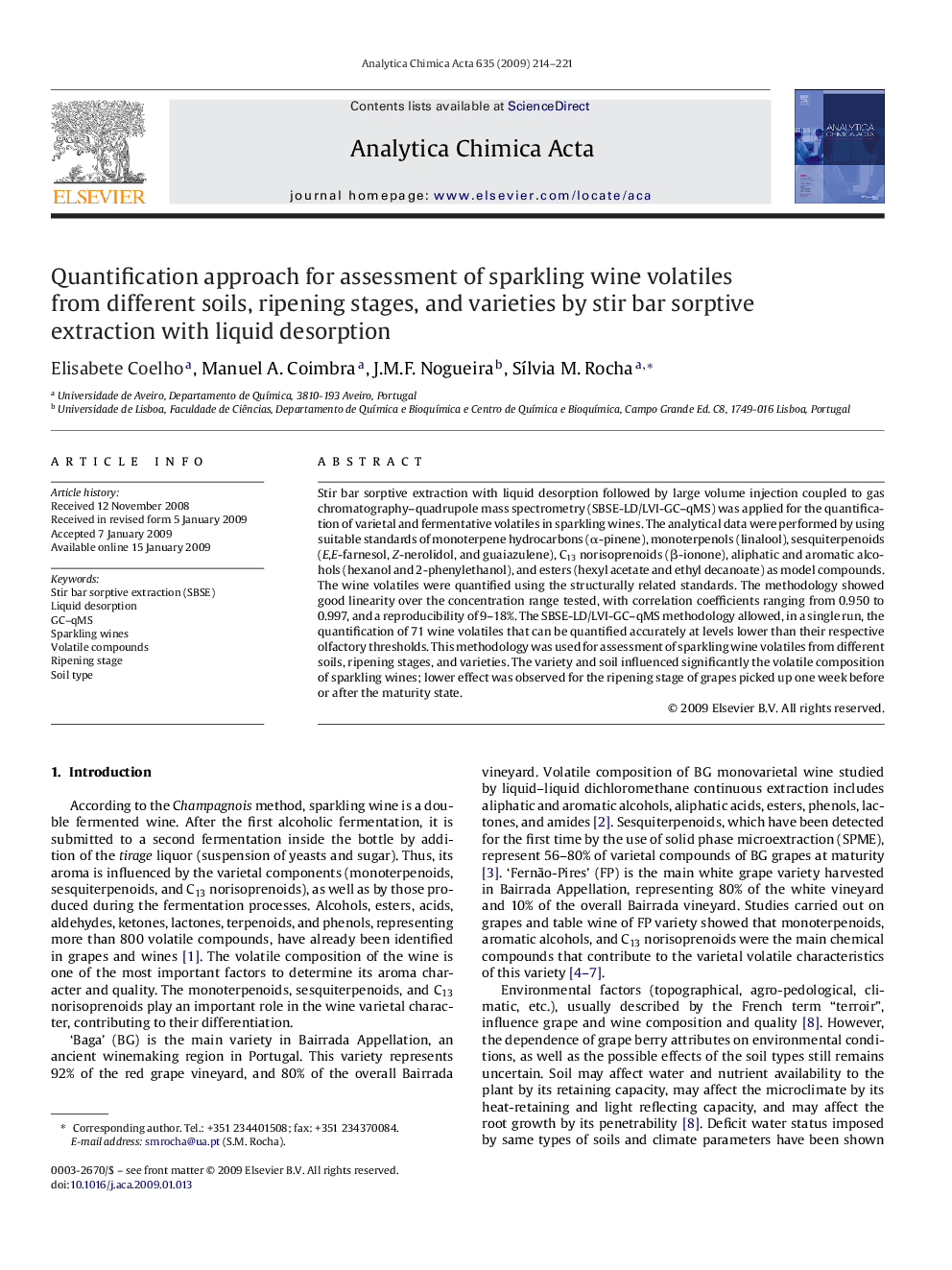| Article ID | Journal | Published Year | Pages | File Type |
|---|---|---|---|---|
| 1168793 | Analytica Chimica Acta | 2009 | 8 Pages |
Stir bar sorptive extraction with liquid desorption followed by large volume injection coupled to gas chromatography–quadrupole mass spectrometry (SBSE-LD/LVI-GC–qMS) was applied for the quantification of varietal and fermentative volatiles in sparkling wines. The analytical data were performed by using suitable standards of monoterpene hydrocarbons (α-pinene), monoterpenols (linalool), sesquiterpenoids (E,E-farnesol, Z-nerolidol, and guaiazulene), C13 norisoprenoids (β-ionone), aliphatic and aromatic alcohols (hexanol and 2-phenylethanol), and esters (hexyl acetate and ethyl decanoate) as model compounds. The wine volatiles were quantified using the structurally related standards. The methodology showed good linearity over the concentration range tested, with correlation coefficients ranging from 0.950 to 0.997, and a reproducibility of 9–18%. The SBSE-LD/LVI-GC–qMS methodology allowed, in a single run, the quantification of 71 wine volatiles that can be quantified accurately at levels lower than their respective olfactory thresholds. This methodology was used for assessment of sparkling wine volatiles from different soils, ripening stages, and varieties. The variety and soil influenced significantly the volatile composition of sparkling wines; lower effect was observed for the ripening stage of grapes picked up one week before or after the maturity state.
